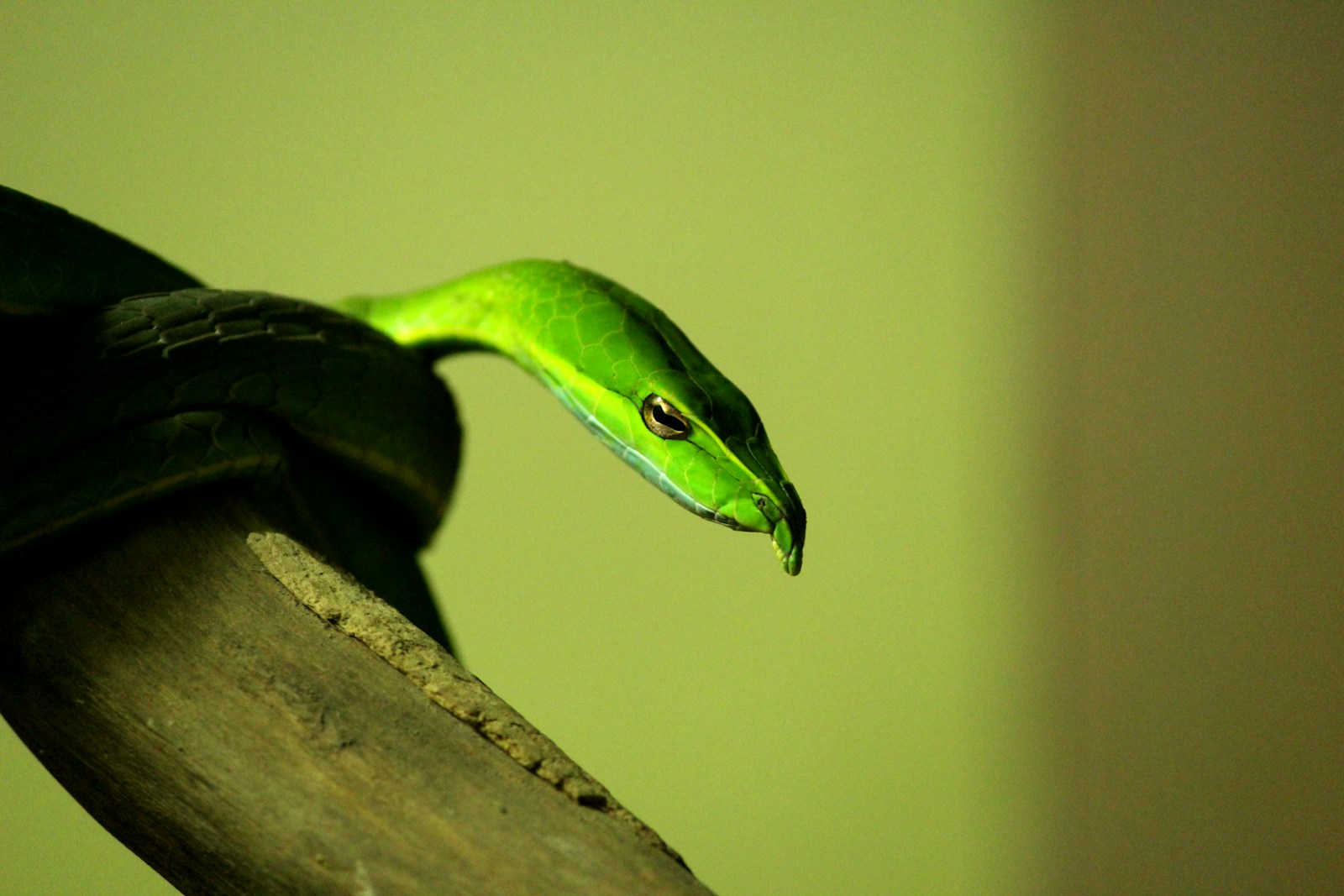High above the forest floor, a remarkable group of serpents has evolved specialized features that enable life in the treetops. Tree-dwelling snakes, also known as arboreal snakes, represent some of nature’s most impressive evolutionary success stories. Unlike their ground-dwelling relatives, these specialized reptiles face unique challenges navigating a three-dimensional world of branches, gaps, and vertical surfaces. Through millions of years of evolution, they’ve developed extraordinary adaptations that transform what might seem like an unlikely body plan for tree living into one perfectly suited for arboreal existence. From their distinctive body shapes to specialized vision and hunting techniques, these remarkable creatures showcase the incredible versatility of snake evolution and the power of natural selection to produce specialized life forms.
The Slender Body Blueprint for Treetop Success
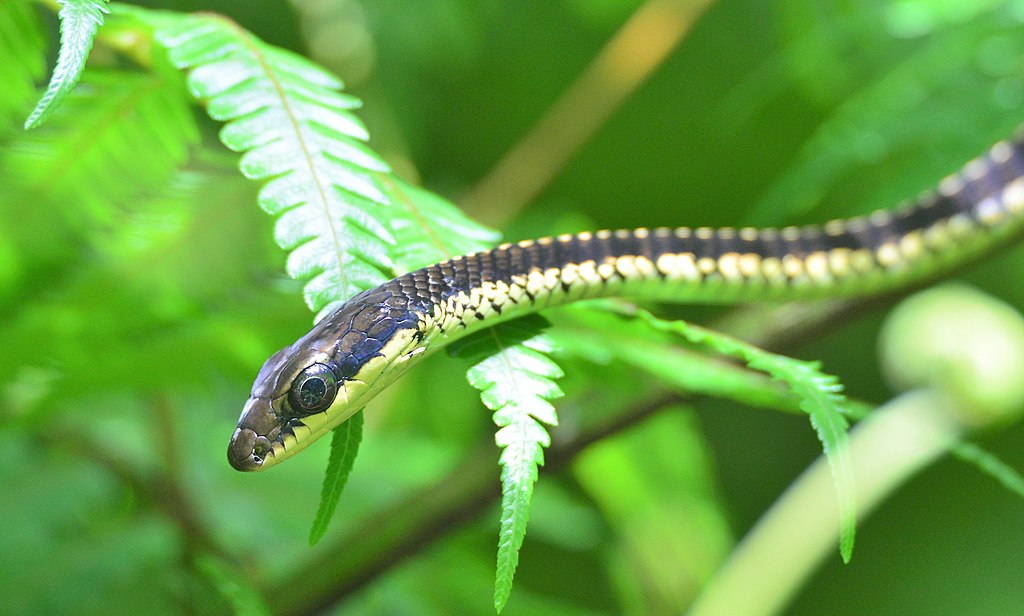
Perhaps the most immediately noticeable feature of arboreal snakes is their slender, elongated body design. Unlike their bulkier ground-dwelling cousins, tree snakes typically exhibit a thin, lightweight body profile that distributes their weight more evenly across branches and reduces the risk of falls. This adaptation is particularly evident in species like the green vine snake (Ahaetulla nasuta) and the Asian vine snake (Ahaetulla prasina), whose bodies can measure mere centimeters in diameter while stretching over a meter in length. Their lightweight frame serves multiple purposes beyond just preventing branches from bending or breaking under their weight. This streamlined design also allows for greater agility and speed when pursuing prey through the complex matrix of branches, vines, and foliage. Additionally, their reduced body mass requires less energy to support and move, making them more efficient predators in an environment where conserving energy is crucial.
Prehensile Tails: Nature’s Fifth Limb
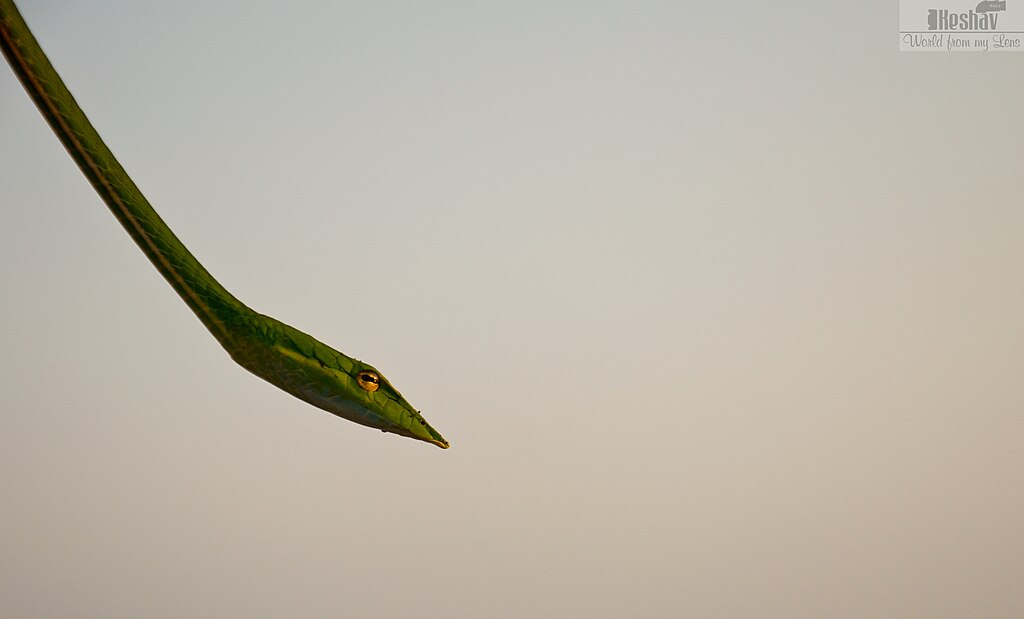
One of the most remarkable adaptations found exclusively in certain arboreal snake species is the prehensile tail. This specialized appendage functions essentially as a fifth limb, capable of gripping branches securely to prevent falls and provide stability during hunting or rest. The vine snakes of South America (Imantodes and Dipsas genera) and various tree boas showcase this adaptation to perfection. Their prehensile tails contain specialized muscles and modified vertebrae that allow for precise control and tremendous gripping strength. When moving through the canopy, these snakes can anchor themselves with their tail while extending their body to reach distant branches, effectively creating a living bridge across gaps. During hunting, the prehensile tail provides an anchor point that allows the snake to strike with greater precision and reduced risk of falling. Some species can even support their entire body weight using only their tail, freeing the rest of their body for hunting or exploration while maintaining a secure connection to their arboreal environment.
Forward-Facing Eyes for Enhanced Depth Perception
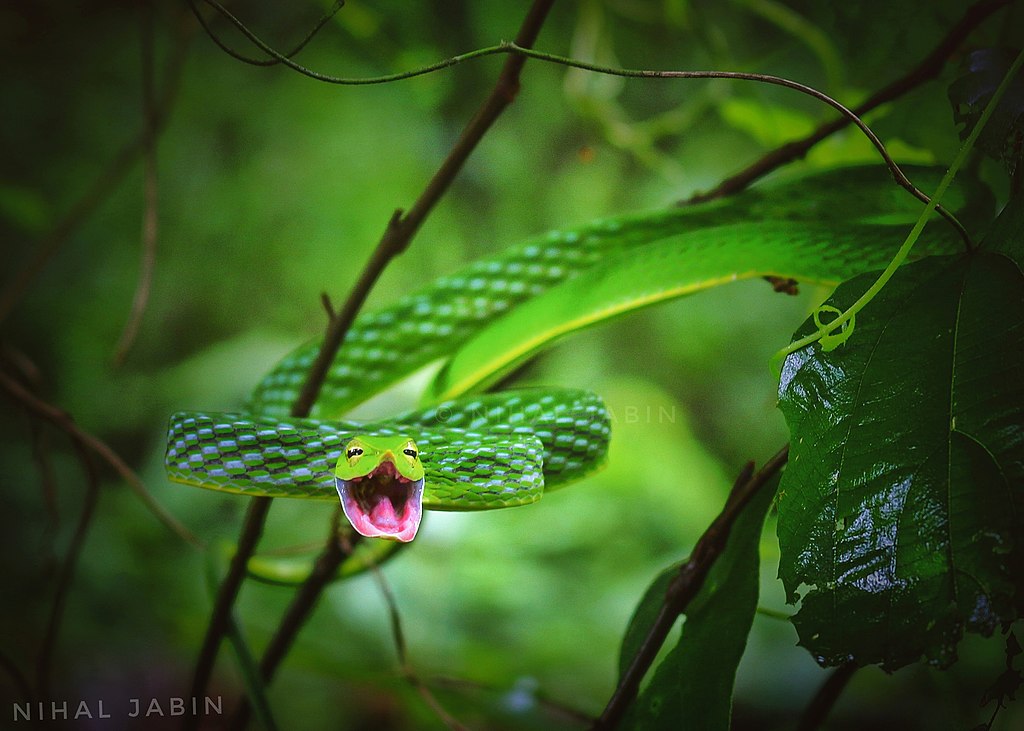
Unlike most ground-dwelling snakes that have eyes positioned on the sides of their head, many arboreal species have evolved eyes that face more forward. This adaptation creates binocular vision similar to what primates and birds of prey possess, granting these tree-dwelling serpents superior depth perception. The brown tree snake (Boiga irregularis) and many vine snake species exemplify this adaptation with their large, forward-facing eyes that provide precise distance judgment when hunting or jumping between branches. This enhanced depth perception is crucial for accurately gauging the distance between branches, preventing potentially fatal falls, and enabling precise strikes at prey items. The forward-facing eye position also expands their field of binocular vision, allowing them to better track moving prey through the complex, three-dimensional environment of the forest canopy. In many arboreal species, this adaptation is paired with enlarged eyes that improve low-light vision, enabling hunting during dawn, dusk, or even nighttime hours when many potential prey animals are active.
Specialized Scale Structures for Enhanced Grip
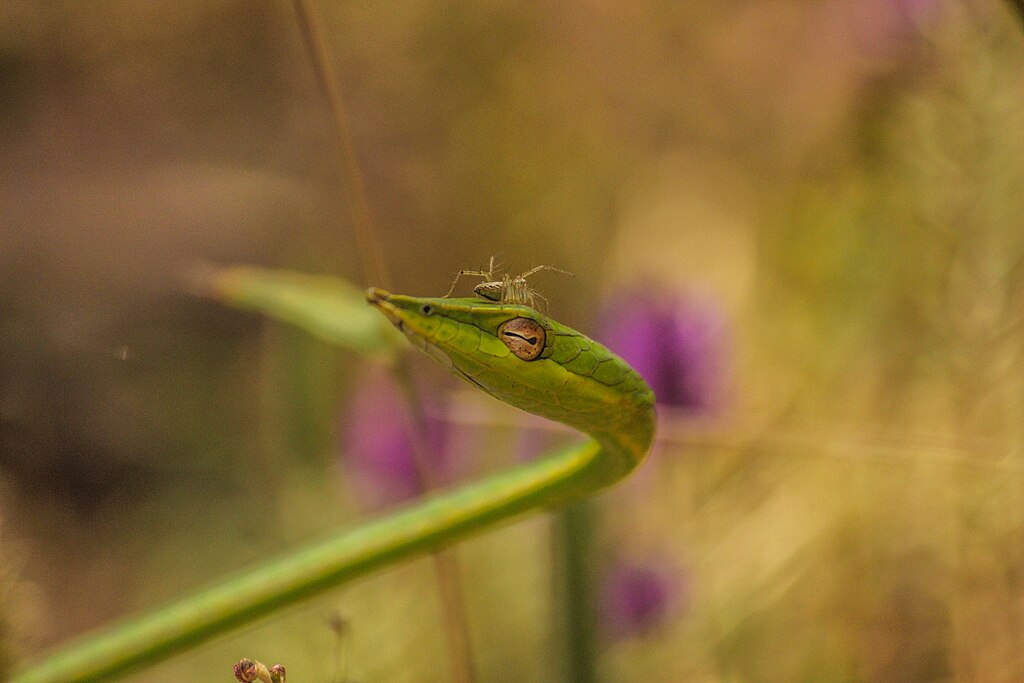
The scales of arboreal snakes have undergone remarkable modifications to enhance their ability to grip and navigate their treetop domain. Many tree-dwelling species possess keeled scales with microscopic ridges that significantly increase friction against tree bark and other surfaces. Some species, such as the rough green snake (Opheodrys aestivus), have developed scales with a particularly pronounced texture that functions similarly to the treads on hiking boots. The red-tailed green ratsnake (Gonyosoma oxycephalum) showcases another variation with slightly concave ventral scales that can create suction-like effects on smooth surfaces such as large leaves or branches. These specialized scale structures prevent dangerous slips and falls while enabling these serpents to climb vertical surfaces that would be impossible for many ground-dwelling snakes to navigate. Additionally, some arboreal species can manipulate their scales to create small air pockets or change the angle of scale overlap, effectively creating a dynamic gripping surface that can adapt to different textures and environmental conditions they encounter while moving through the canopy.
Extraordinary Head Shapes for Specialized Hunting
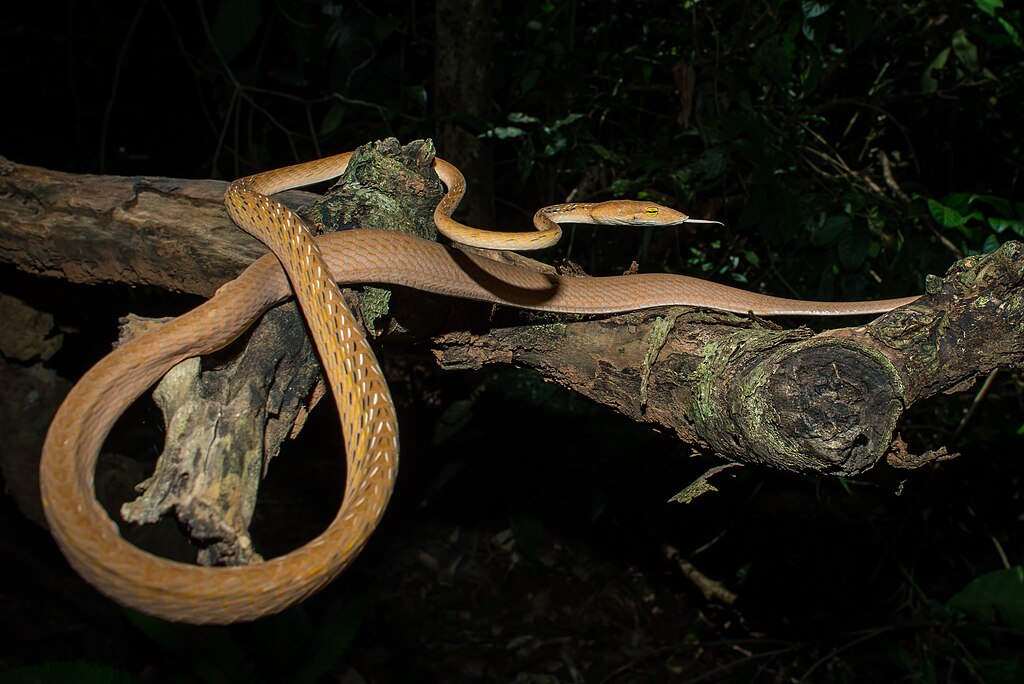
The head morphology of arboreal snakes has evolved striking specializations that reflect their hunting techniques and preferred prey. Many species feature elongated, pointed snouts that help them probe crevices and foliage for hidden prey, while others have developed flattened, triangular heads that improve aerodynamics during rapid strikes. The vine snakes (Ahaetulla genus) exemplify this adaptation with their incredibly elongated heads and pointed snouts that resemble plant stems or twigs, providing both camouflage and a specialized tool for precise striking. The green tree python (Morelia viridis) and emerald tree boa (Corallus caninus) showcase a different adaptation with exceptionally large heads relative to their neck size, allowing them to consume large prey items found in the canopy, such as birds and mammals. These specialized head shapes also frequently correlate with modified jaw structures and dental arrangements that facilitate efficient capture and processing of canopy-dwelling prey. In many species, the head shape is further enhanced by specialized scale arrangements that reduce visual detection by both predators and potential prey, blending the snake’s profile into the surrounding foliage.
Color Patterns That Vanish Among Leaves and Branches
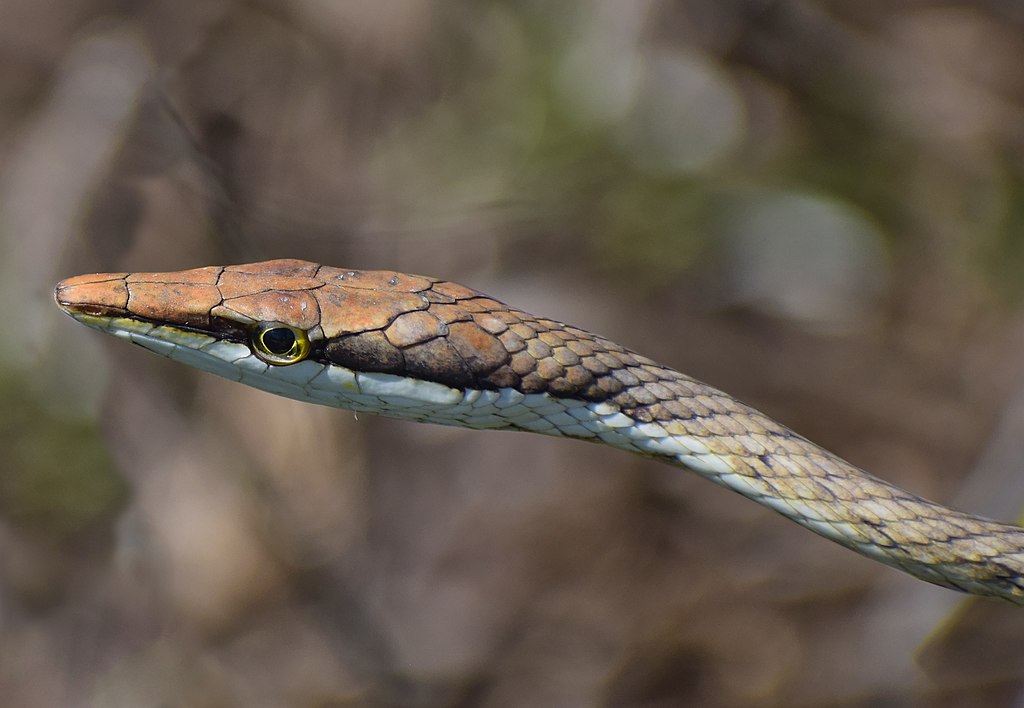
The coloration of arboreal snakes represents one of their most visually striking adaptations, with patterns and hues that provide exceptional camouflage in their treetop environment. Many species display vibrant green coloration that allows them to disappear among leaves and vegetation, such as the emerald tree boa (Corallus caninus) and the green tree python (Morelia viridis). Others exhibit patterns that mimic dappled sunlight filtering through leaves or the texture of tree bark, like the aptly named brown tree snake (Boiga irregularis). Some arboreal snakes take camouflage to extraordinary levels with bodies that resemble vines or twigs, such as the twig snakes (Thelotornis genus) that can remain motionless for hours while perfectly mimicking a dead branch. These specialized color patterns serve not only as defensive mechanisms against predators but also as hunting adaptations that allow these reptiles to approach prey undetected. The effectiveness of their camouflage often depends on remaining motionless, which explains why many arboreal species have evolved extraordinary patience and can remain perfectly still for extended periods while waiting for prey to approach within striking distance.
Unique Locomotion Techniques for Canopy Navigation
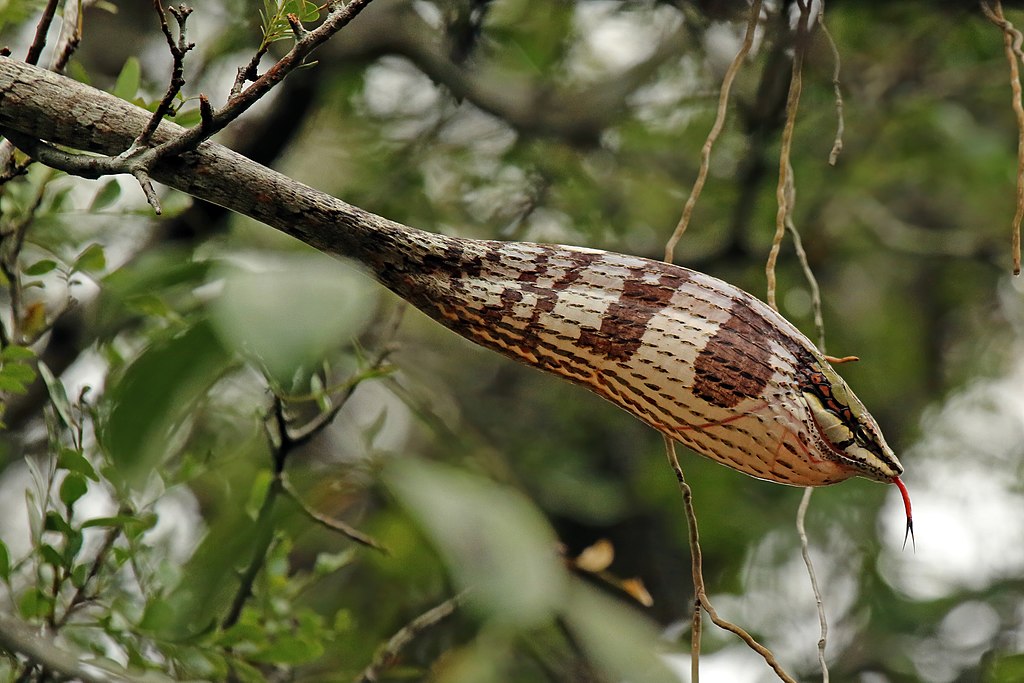
Arboreal snakes have developed specialized movement patterns that allow efficient navigation through their complex three-dimensional environment. Unlike ground-dwelling species that primarily use lateral undulation, tree snakes employ several distinctive locomotion techniques specifically adapted for arboreal travel. “Concertina locomotion” involves the snake alternately anchoring its body while extending forward sections, then pulling the rear portions forward—a technique that provides stability on narrow branches. Many species also use “bridge progression,” extending their body across gaps between branches before transferring their weight to create living bridges through the canopy. Perhaps most impressive is the “gap-launching” behavior observed in paradise tree snakes (Chrysopelea paradisi), which can actually flatten their bodies and glide impressive distances between trees by pushing off with their tail and creating an S-shaped undulation that generates lift. These specialized movement patterns require precise muscle control and coordination not found in terrestrial snake species, representing significant evolutionary developments. Additionally, many arboreal species can move with remarkable silence, an adaptation that benefits both hunting success and predator avoidance in an environment where sound travels efficiently and can alert potential prey.
Specialized Respiratory Adaptations for Vertical Living
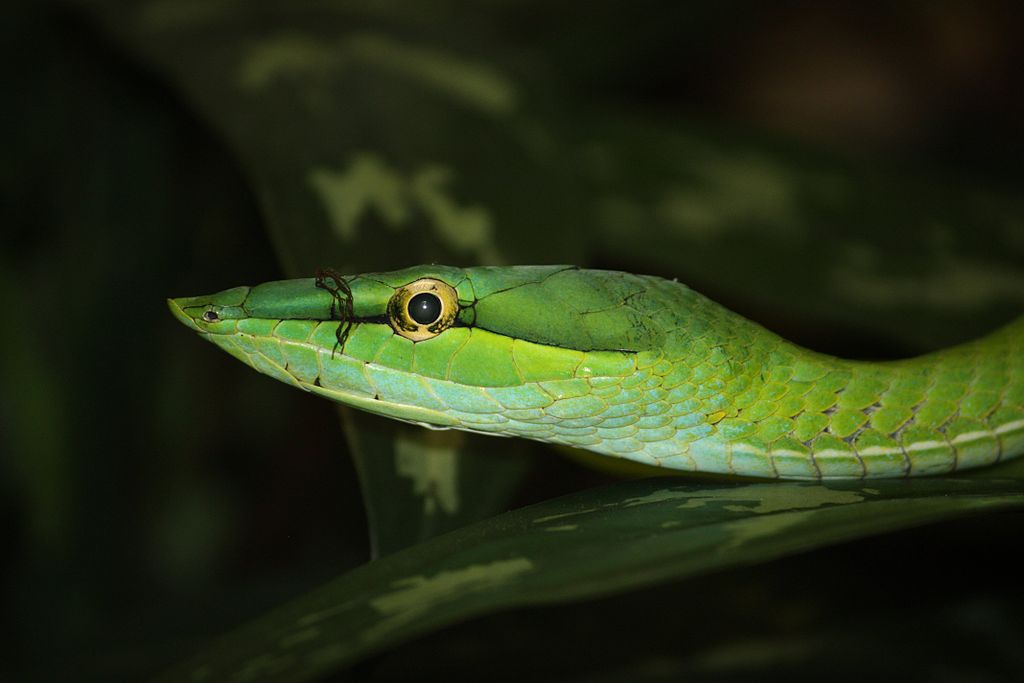
Living in a vertical environment presents unique respiratory challenges for arboreal snakes, which have evolved specialized adaptations to ensure efficient breathing regardless of body position. Unlike ground-dwelling snakes that generally maintain a horizontal orientation, tree snakes frequently spend time climbing vertically or even hanging upside-down, positions that would compromise respiratory function in unspecialized species. Many arboreal snakes have developed modified lung structures with reinforced tissue that prevents compression when the snake is oriented vertically. The flying snakes (Chrysopelea genus) exhibit particularly remarkable respiratory adaptations, with specially positioned lung structures that function efficiently even during their aerial gliding behaviors. Some tree-dwelling species possess modified tracheal arrangements that prevent blockage of air passages when the snake is positioned at extreme angles. These respiratory adaptations ensure consistent oxygen supply regardless of orientation, allowing arboreal species to remain motionless in ambush positions for extended periods without respiratory compromise. Additionally, many species show cardiovascular adaptations that help maintain proper blood flow to the brain and vital organs when in vertical or inverted positions, preventing the blood pooling issues that would affect less specialized reptiles.
Heat-Sensing Pits for Hunting in Leafy Shadows

Several families of arboreal snakes have evolved specialized heat-sensing organs that allow them to detect warm-blooded prey even in the visually complex environment of dense foliage. This adaptation is particularly pronounced in arboreal pit vipers like the eyelash viper (Bothriechis schlegelii) and the green palm viper (Bothriechis lateralis), which possess highly sensitive facial pits between their eyes and nostrils. These specialized organs can detect temperature differences as small as 0.003°C, effectively giving these serpents a form of infrared vision that works independently of light conditions. The heat-sensing capability allows these snakes to precisely locate warm-blooded prey such as birds and mammals that might otherwise be concealed by leaves and branches. In the complex visual environment of the forest canopy, where light patterns are constantly shifting and prey can easily hide behind vegetation, this adaptation provides a crucial hunting advantage. The positioning of these heat-sensing pits on arboreal species is often angled differently than in their terrestrial relatives, optimized for detecting prey moving above or below them in three-dimensional space. This adaptation, combined with their camouflage and ambush hunting strategy, makes arboreal pit vipers among the most effective predators in tropical canopies.
Modified Vertebrae for Enhanced Flexibility
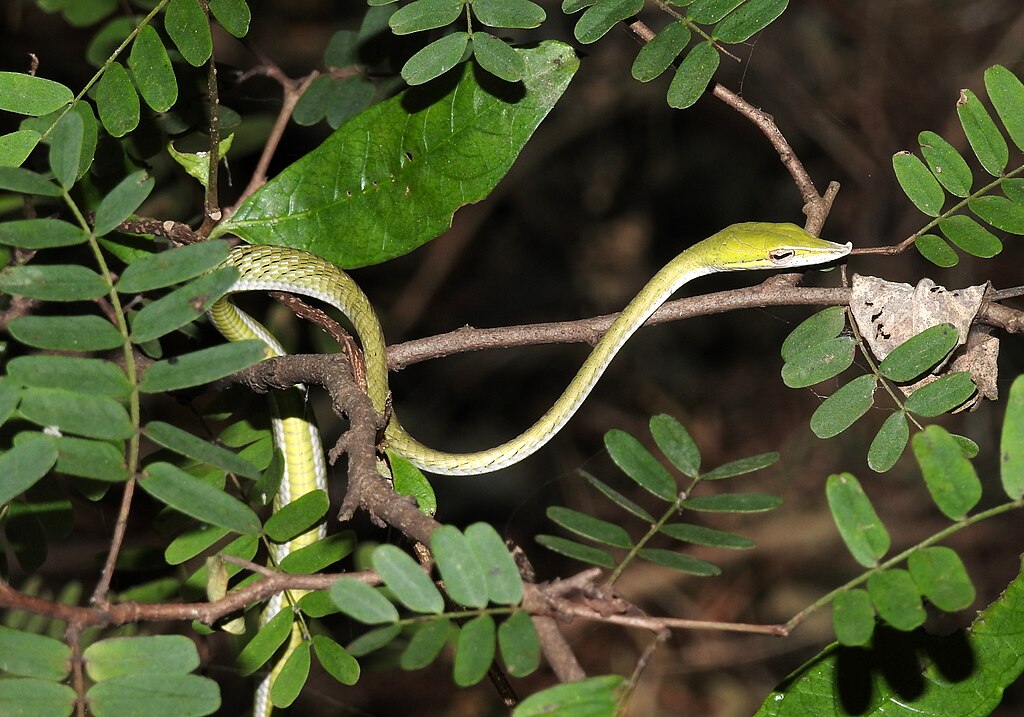
The vertebral structure of arboreal snakes has undergone significant modifications that grant them exceptional flexibility for navigating their complex environment. While all snakes possess numerous vertebrae, tree-dwelling species typically have more vertebrae per unit of body length, with specialized articulation points that allow for greater range of motion. The paradise tree snake (Chrysopelea paradisi) and many vine snake species demonstrate this adaptation with vertebrae that permit not only lateral movement but also controlled twisting and rotation of the body. This enhanced flexibility enables them to wrap securely around branches of varying diameters and navigate through tight spaces between foliage. The specialized vertebral structure also contributes to their ability to extend their bodies across gaps in the canopy while maintaining stability and control. In many species, the vertebrae near the head region have developed modified processes that allow for greater mobility of the neck, enabling precise striking movements without shifting the entire body and potentially alerting prey. These vertebral adaptations work in concert with specialized musculature to create a body capable of complex three-dimensional movement patterns not possible for their ground-dwelling relatives.
Venom Adaptations Specialized for Canopy Prey
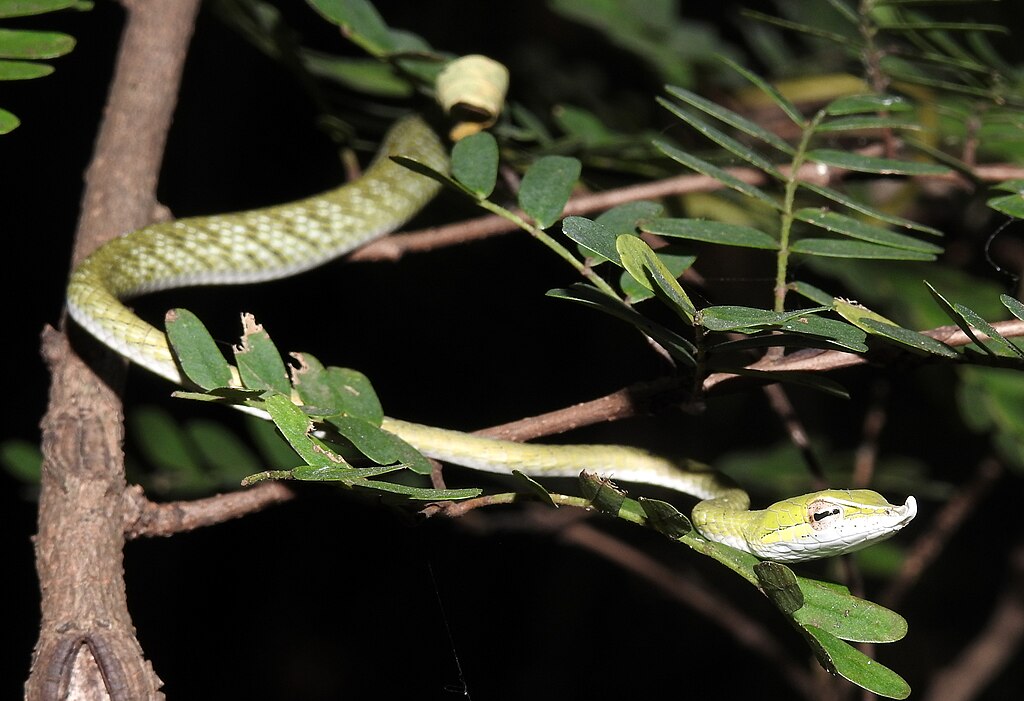
Many venomous arboreal snake species have evolved toxins specifically tailored to the types of prey available in forest canopies. Birds and arboreal mammals, common prey items in the treetops, often require different venom compounds than the ground-dwelling prey targeted by terrestrial snakes. The boomslang (Dispholidus typus) and many tree vipers produce hemotoxic venoms that target the circulatory system, causing rapid incapacitation of avian prey that might otherwise fly away despite being bitten. Other species like the mangrove snake (Boiga dendrophila) have developed potent neurotoxins particularly effective against small mammals and birds found in their canopy habitat. The specialized delivery systems for these venoms often include rear-fanged arrangements in species that need to maintain a secure grip on prey while navigating through branches. Some arboreal venomous species have evolved particularly fast-acting toxins that quickly immobilize prey, preventing injured animals from escaping through the complex three-dimensional environment. These venom adaptations represent sophisticated biochemical solutions to the challenges of hunting in an environment where injured prey could easily escape by flying or leaping to adjacent trees, making rapid incapacitation essential for hunting success.
Specialized Reproductive Strategies for Canopy Life
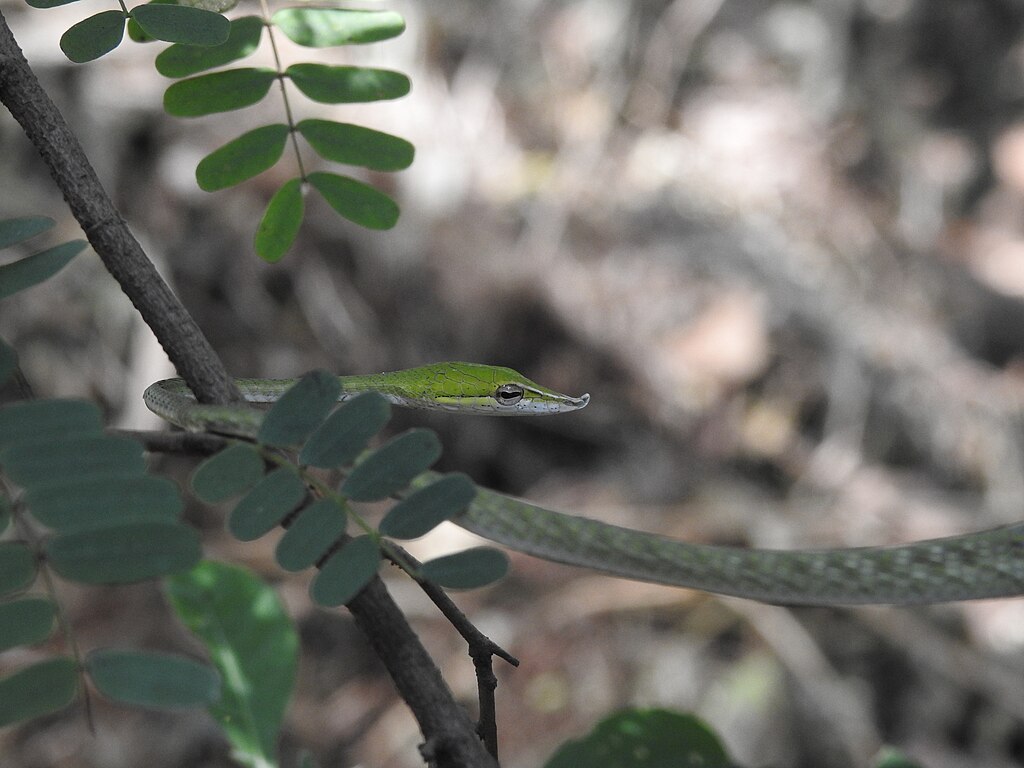
Tree-dwelling snakes have developed unique reproductive adaptations suited to the challenges and opportunities of arboreal living. Many species have evolved viviparity (live birth) rather than egg-laying, which provides greater protection for developing offspring and eliminates the need to find suitable ground-level nesting sites. The emerald tree boa (Corallus caninus) and green tree python (Morelia viridis) exemplify this adaptation, giving birth to fully-formed young that are immediately capable of gripping branches and surviving in the canopy environment. Species that do lay eggs often select specialized locations within tree hollows, epiphytic plants, or decomposing vegetation trapped in the canopy, keeping their entire life cycle above ground level. Some arboreal snakes exhibit remarkable maternal behaviors, with females of certain species remaining with their eggs and actively defending them against predators—a rare behavior among reptiles. The timing of reproduction in many arboreal species correlates with seasonal patterns of bird nesting or mammal breeding in the canopy, ensuring an abundance of prey for newly independent young snakes. These specialized reproductive strategies represent comprehensive adaptations that enable these species to complete their entire life cycle within the arboreal environment, reducing or eliminating their vulnerability during terrestrial phases that would otherwise be necessary for reproduction.
The remarkable adaptations of tree-dwelling snakes showcase nature’s incredible capacity for specialized evolution. From their slender bodies and prehensile tails to their forward-facing eyes and specialized scales, these serpents have transformed the basic snake body plan into one perfectly suited for life among the branches. Their adaptations extend beyond physical features to include specialized behaviors, hunting techniques, and reproductive strategies that complete their arboreal lifestyle. As scientists continue studying these fascinating creatures, we gain deeper insights into evolutionary processes and the remarkable ways in which life adapts to challenging environments. Tree-dwelling snakes stand as perfect examples of how natural selection can produce highly specialized organisms exquisitely adapted to their ecological niche, turning what might seem like an unlikely candidate for arboreal life into some of the forest canopy’s most successful predators.

